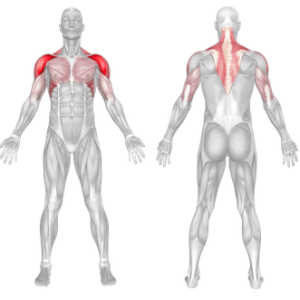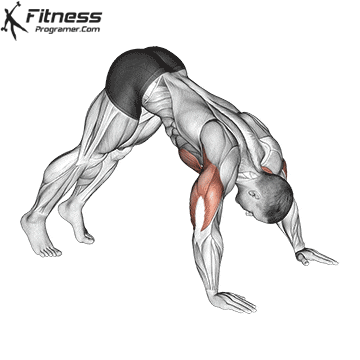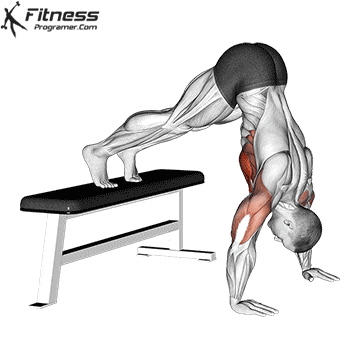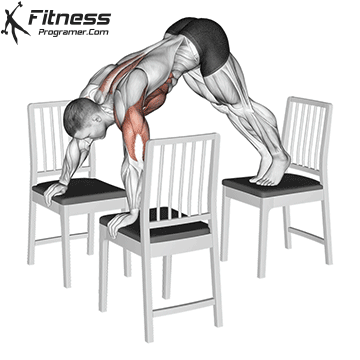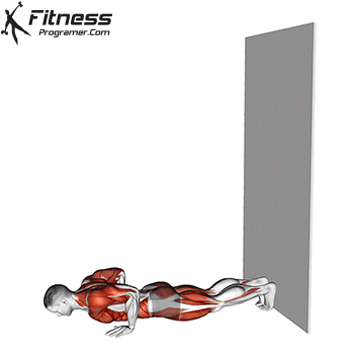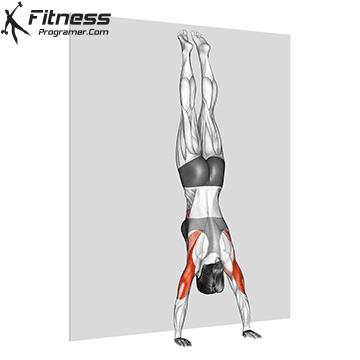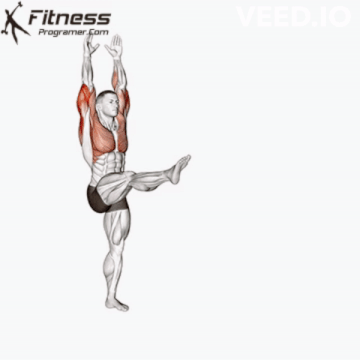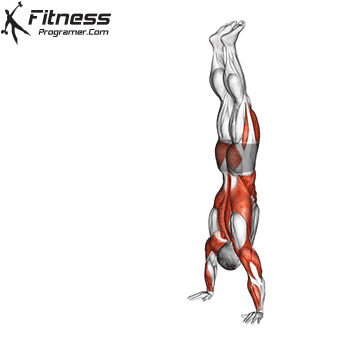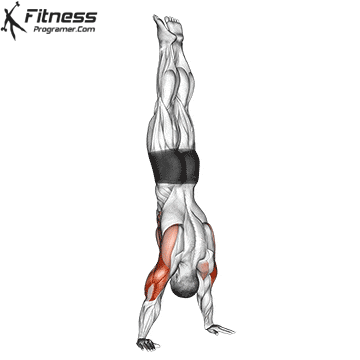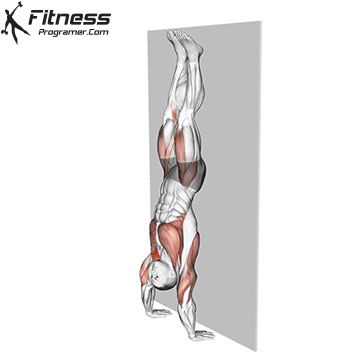Overview
The wall-supported handstand push-up is a bodyweight exercise performed with the hands placed on two elevated surfaces, such as benches, and the feet resting against a wall for balance. This movement is considered an advanced strength exercise because it places greater demand on the deltoids, triceps, and upper chest, requiring superior control, balance, and flexibility. It’s commonly used by calisthenics athletes, gymnasts, and functional fitness enthusiasts to improve upper body pressing strength.
How to Perform:
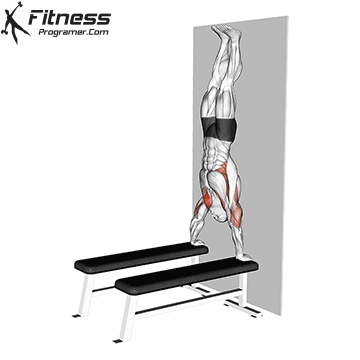
Setup
Position Two Benches
- Place two sturdy benches or parallettes shoulder-width apart.
- Ensure enough space for your head to descend between the benches.
Find a Stable Wall
- Stand close to a sturdy wall that will support your feet.
Hand Placement
- Place your hands securely on each bench, ensuring a firm grip to prevent slipping.
Kick Up into a Handstand
- Kick up against the wall, keeping your core tight and legs straight.
- Ensure your body is aligned in a neutral position.
Execution
Lower Your Body
- Bend your elbows slowly and under control until your head moves below the level of your hands.
- Keep your elbows at a 45-degree angle to reduce shoulder strain.
Push Back Up
- Engage your shoulders and triceps to press back to the starting position.
- Maintain a straight body position, avoiding excessive arching.
Repeat for Desired Repetitions
- Perform 3 to 5 sets of 4 to 10 reps, based on strength level.
Tips for Proper Form
- Engage your core to keep your body aligned and prevent arching.
- Lower yourself slowly to maximize muscle activation and avoid injury.
- Place hands at shoulder width to maintain proper pressing mechanics.
- Keep your elbows at a controlled angle to reduce stress on the shoulders.
- Use a spotter or mats when learning for safety.
Common Mistakes to Avoid
- Letting the lower back arch – weak core engagement can lead to poor form and injury.
- Lowering too quickly – control is key for muscle engagement and safety.
- Placing hands too far apart – improper hand placement reduces pressing efficiency.
- Not warming up shoulders – increases injury risk.
- Relying too much on the wall – while the wall helps with balance, excessive leaning limits strength gains.
Benefits of Handstand Push-ups Between Benches
1. Increases Range of Motion for Greater Muscle Activation
Performing handstand push-ups between benches allows for a deeper stretch in the shoulders and triceps, leading to greater strength and muscle growth compared to standard HSPUs.
2. Builds Unmatched Shoulder Strength
By increasing the pressing demand, this variation forces the deltoids to work harder, making it one of the most effective bodyweight exercises for shoulder development.
3. Strengthens the Triceps and Upper Chest
The triceps play a major role in pushing movements, and this exercise maximizes their activation. Additionally, the upper chest is engaged to help stabilize the movement.
4. Enhances Balance and Body Control
Performing a freestanding version of this movement improves coordination, control, and stability, which benefits gymnasts, calisthenics practitioners, and functional athletes.
5. Prepares You for Advanced Calisthenics Skills
Mastering this move builds the strength needed for advanced calisthenic exercises like kipping handstand push-ups, 90-degree push-ups and planche push-ups.
6. Requires No Equipment Beyond Benches
Unlike barbell presses, this bodyweight movement allows for overhead pressing strength development without gym equipment.
7. Improves Functional Strength for Other Workouts
Handstand push-ups between benches translate well into barbell overhead presses, Olympic lifts, and general athletic performance, making it a valuable movement for strength athletes and CrossFitters.
Muscles Worked
